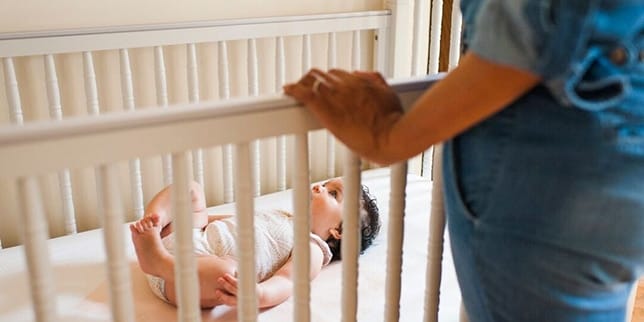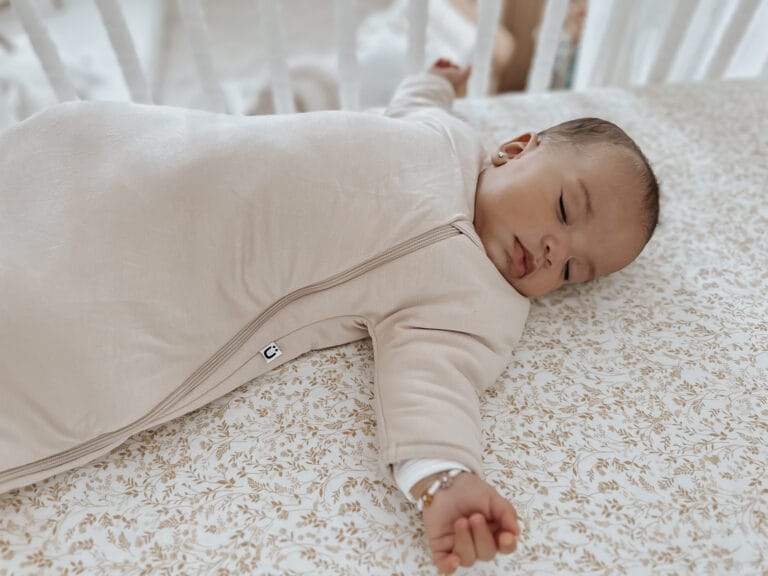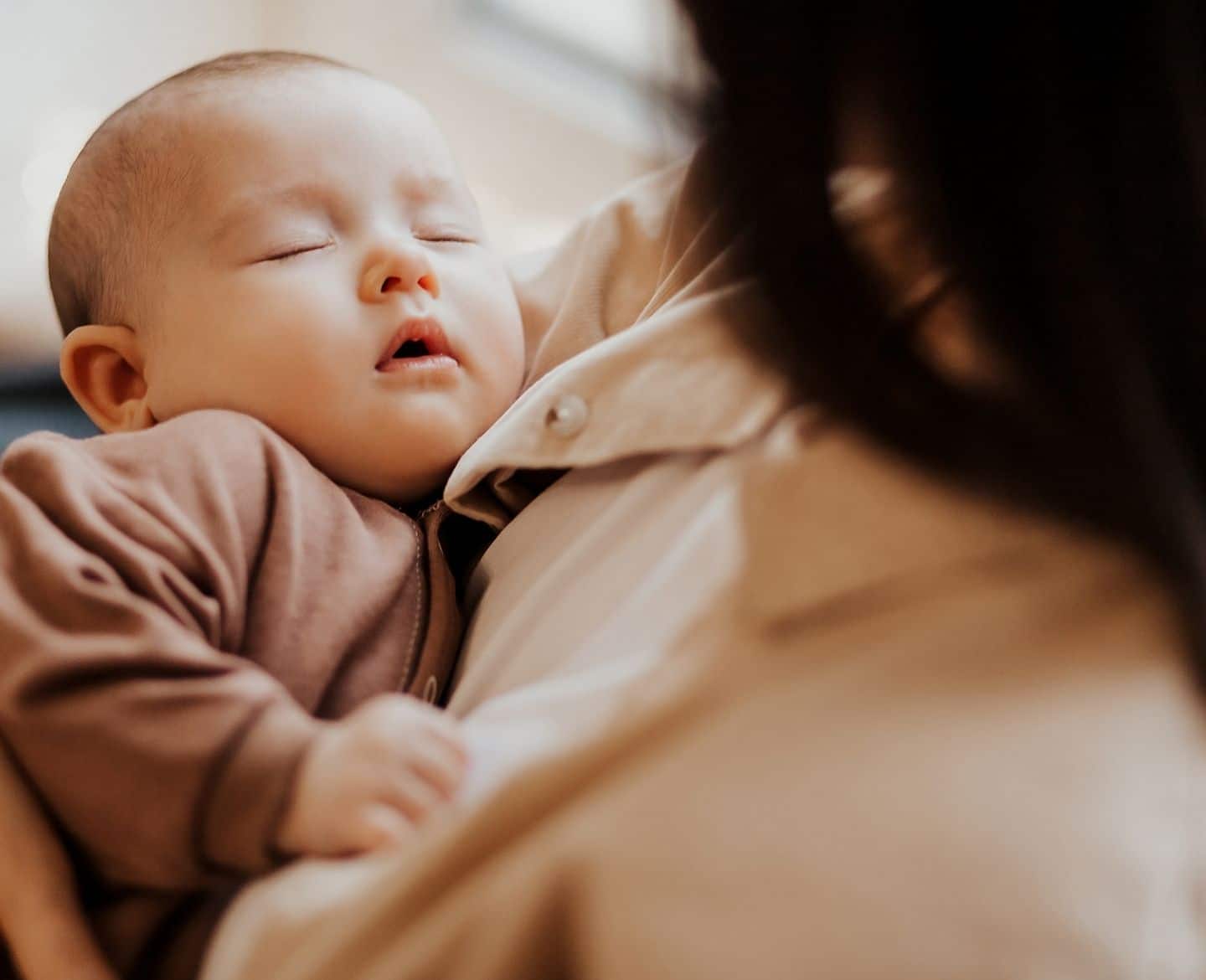7 Rules for Safe Baby Sleep

Why AAP's new rules around SIDS should matter.
I’m a strong believer in evidence-based medicine, and we know we can take steps to keep our babies safe during their sleep. But one of my greatest fears as a mom is still sudden infant death syndrome, also known as SIDS. And while we’ve been talking about SIDS in the medical community for quite some time, this week, the American Academy of Pediatrics (AAP) released updated guidelines for safe sleep, warranting a closer look at this disconcerting issue.
SIDS is any sudden or unexpected infant death that occurs during sleep within the first year of life and that cannot be explained after thorough investigation. Most SIDS cases occur within the first six months of life, and babies between the ages of 2 and 4 months are at the highest risk. SIDS remains the leading cause of death among U.S. babies, claiming close to 3,500 lives each year.
We don’t know what causes sudden infant death, but research suggests that brain abnormalities, genetics and hazardous environmental factors, like loose blankets and smoking households, can play a role. And though there is no way to test for which children have an underlying vulnerability, certain babies, such as premature infants, are at increased risk. We also know that breastfeeding decreases the risk of SIDS. Here are the AAP’s new safe-sleep recommendations to help reduce your little one’s risk of SIDS:
1. Back to sleep for EVERY sleep. Infants under the age of one should always be put down and sleep on their backs — at nap time and at night. Many parents worry about their babies spitting up and choking if placed flat on their back, particularly if they have gastrointestinal reflux, but the AAP asserts that the supine position doesn’t increase the risk of infant choking. If your baby has a medical condition that you feel necessitates sleeping on their tummy, please discuss it with your physician. Once your little one can roll over, continue to put him down on his back, but you can let him sleep on his stomach if he ends up rolling himself into that position.
2. Use a firm sleep surface. Infants should be put to sleep on a firm mattress in a crib or bassinet that adheres to the newest standards of safety. Mattresses that are too soft can create an indentation or pocket that creates the risk of rebreathing or suffocation as your baby gets old enough to roll over. Since rolling over is a normal part of gross motor development in the first six months of your little one’s life, a breathable mattress can be helpful. A breathable mattress, such as Newton Rest, provides your baby with the support she needs while allowing air to circulate. It also has the added benefit of preventing overheating (more on that soon!). But remember, a breathable mattress is not an excuse to forget about other safe-sleep practices. Make sure, also, to use only mattresses that are approved for that specific product (for example, don’t put a crib mattress into a Pack n’ Play).
3. Only the baby should be in the crib. Do not place blankets, pillows, bumpers or stuffed animals in the crib. The mattress can be covered with a fitted sheet with no additional bedding or soft objects.
4. Avoid putting babies to sleep in car seats, swings, or bouncers. Infants have poor neck control, and if their heads fall forward they can inadvertently cut off their trachea (air pipe) and stop breathing. This is known as positional asphyxia. If a baby falls asleep in one of these devices, the AAP recommends to move them to a safe-sleep space as soon as possible.
5. Keep your baby’s crib in the same room, close to your bed. This is the newest recommendation. According to the AAP, an infant should sleep in the same room as his parents, in his own crib or bassinet, for at least 6 months and ideally the first year. Research suggests having the baby sleep in the parent’s room on a separate surface can decrease the risk of SIDS by up to fifty percent. Couches or arm chairs are particularly dangerous spaces for infants to sleep in, increasing the risk of being trapped in cushion and of infant deaths.
6. Put the baby back into the crib after feeding or cuddling. The AAP recommends infants return to a separate sleep space after feeding. It also advises to feed in an environment that is safe for sleep in case you fall asleep. Don’t feed your baby on a couch in the middle of the night. Opt for an adult bed instead, and make sure that it is as safe as possible: no pillows, blankets or other objects that could obstruct the baby’s breathing when feeding in bed. If you have had any alcoholic drink, sleeping in the bed with your little one is not safe. The AAP statement notes that bedsharing with infants that are younger than four months or premature can increase the risk of SIDS. So do everything you can to stay awake and return the baby to his crib or bassinet once he is done eating. In addition, if you or your partner smoke or take medication that can increase drowsiness, you should avoid bed-sharing.
7. Avoid overheating when sleeping. Studies have shown that overheating increases the risk of SIDS. Dress your little one in one light layer more than you have on, and do not cover his head. If your baby is sweating a lot, he’s probably over bundled. Are you worried your little guy may be cold? Use a swaddle or sleep sack to keep him comfortable. Once your little one shows signs of being ready to roll, stop swaddling and use only a sleep sack — no loose blanket.
As a pediatrician and a mom, I get it, you can’t control everything in life. That’s actually one of my most difficult parenting struggles. But as parents, we do have areas in which we can feel empowered to make the best choices for our children, and sleep safety is one of them.
While extrinsic factors are involved in SIDS-related deaths, SIDS is also related to intrinsic biological factors that infants may have that parents cannot prevent and don’t know about. This means that parents can “do everything right” and provide the safest sleeping environment possible, and their child may still fall victim of SIDS. We know how frightening this lack of control can be. If you are facing extreme levels of anxiety about any parenting issues and specifically about SIDS, reach out to your pediatrician for support and guidance.
Furthermore, exhaustion can be really challenging for new parents. Don’t be afraid to accept or ask for help. At Premier Pediatrics, we are strongly committed to supporting families as they transition from pregnancy to parenthood. We get that you may have questions about sleep safety or other topics. We understand that you may be getting conflicting information from lots of sources and are available to discuss your concerns in an open-minded and non-judgmental way. If you have questions about sleep safety, it’s always best to be safe than sorry and contact your pediatrician, it’s always best to reach out and check our bookshelf for information on common pediatric topics.
Photography by Jonica Moore Studio for Well Rounded.


































